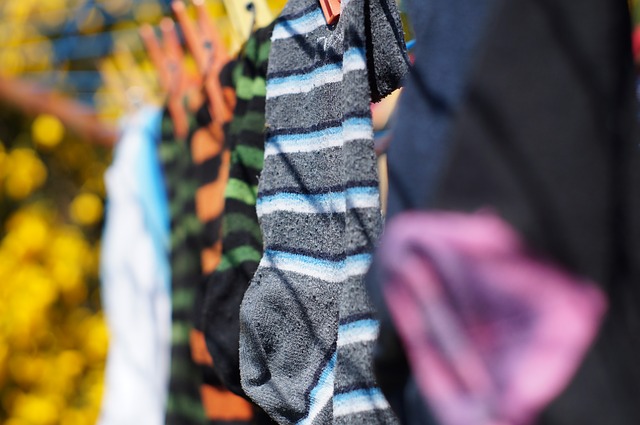You can re-purpose almost anything in a survival situation. Leaky roof? No problem, you can use a tarp to cover it. Caught camping in the rain? Plastic bags and trash bags will keep your head dry.
In today’s article, I want to discuss survival uses for socks. You may have a whole bunch of old socks in your attic right now and don’t even know it … but this unobtrusive garment can help you in more ways than you can imagine. Let’s take a look:
1. Improvised bandage
Though I am not a doctor, I do want to point out that you can use them to stop bleeding. For instance, the part of the sock that’s elastic can make a good ace bandage. Another way of using it is in conjunction with duct tape (or anything else that would secure the sock in place over the wound). Lastly, they can be used as a tourniquet. This could be one of the things you bring up to learn more about, if and when you decide to take a first-aid course.
2. Filter water
Before you purify water, you should first run it through a piece of cloth, such as a bandanna or a sock, to remove debris.
Restore Your Old Blades To A Razor’s Edge In Just Seconds!
You also can use socks to melt snow in order to drink the resulting water. Just like rainwater, snow is safe for human consumption, but you have to melt it first.
3. Temporary dust mask
 A sock can protect you from dust, although it’ll do a much better job if you soak it in lemon juice first. Keep in mind this should be a last resort; you’ll only use it to get to safety in case you get hit by a sand storm.
A sock can protect you from dust, although it’ll do a much better job if you soak it in lemon juice first. Keep in mind this should be a last resort; you’ll only use it to get to safety in case you get hit by a sand storm.
4. Towel
This is somewhat unconventional, but it’ll work if you’ve got nothing else. Towels aren’t really high up on a survivalist bug-out bag packing list, but hygiene will be important while bugging out.
5. Pillow
As long as you can find leaves at your camp site, you can make a pillow by filling a sock, a plastic bag or a trash bag with them.
New Solar Oven Is So Fast It’s Been Dubbed “Mother Nature’s Microwave”
Unlike the last two alternatives, socks allow moisture to pass, so you need to make sure the leaves are dry. But also unlike the last two, a sock is much softer.
Of course, you can use something else besides leaves, such as drier lint or straws.
6. To tie things together
I don’t even know where to begin, here. You can tie your gardening tools, the branches you bring back to the campsite to make fire with — and on and on and on.
7. As a self-defense weapon
I left the best for last. Fill a sock with coins or rocks and you’ve got yourself a veritable weapon that can cause significant damage to your opponent. Now, whether you’ll actually use this in real life is debatable, but it’s good to know survival uses such as these because they open up your creativity, which will later on be useful in emergency situations.
Before we wrap this up…
Where and when should you pack and store your socks? Here’s a few ideas that apply to both bug-in and bug-out situations:
- keep them inside your attic (you can’t store food and water there, anyway, because of the heat and temperature variations).
- keep a couple of them in your bug-out bag.
- keep a pair as part of your get-home bag.
- keep them in your car’s survival kit.
One place you probably don’t want to keep a pair of socks is in your EDC kit (everyday carry). Socks just aren’t something you want to carry with you at all times. As long as you’re in the proximity of your survival bags most of the times, you should be OK.
Although socks probably won’t save your life, they can be of tremendous help. And let’s not forget the main usage — that of keeping your feet warm and dry.
Related:
10 Things You Throw Away That Can Be Used For Survival
What are other survival uses for socks? Share your tips in the section below:
Learn How To ‘Live Off The Land’ With Just Your Gun. Read More Here.
 Off The Grid News Better Ideas For Off The Grid Living
Off The Grid News Better Ideas For Off The Grid Living





